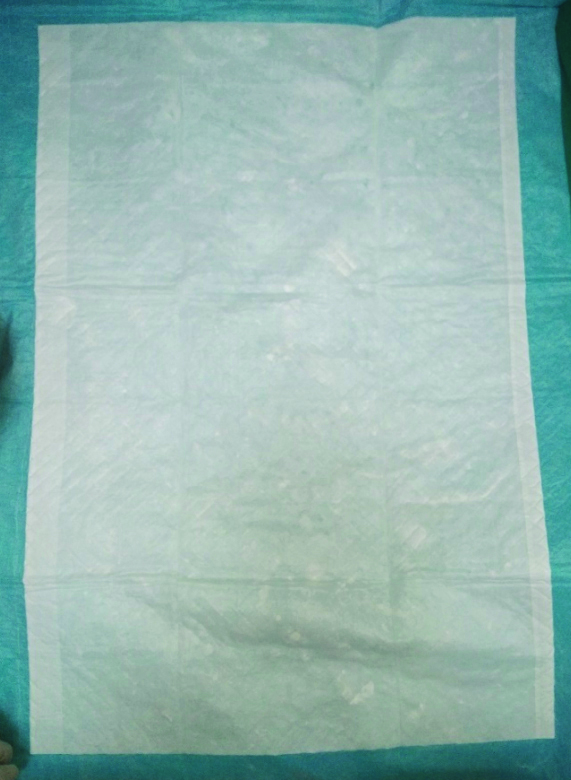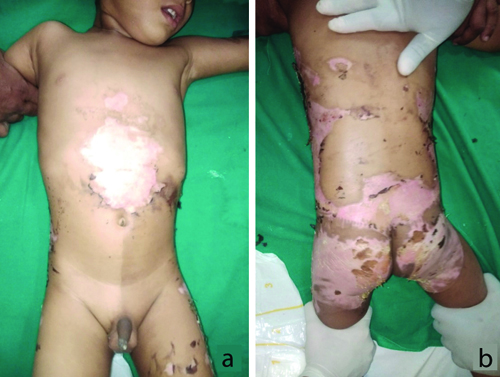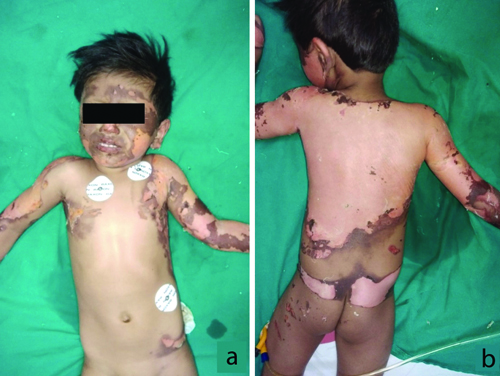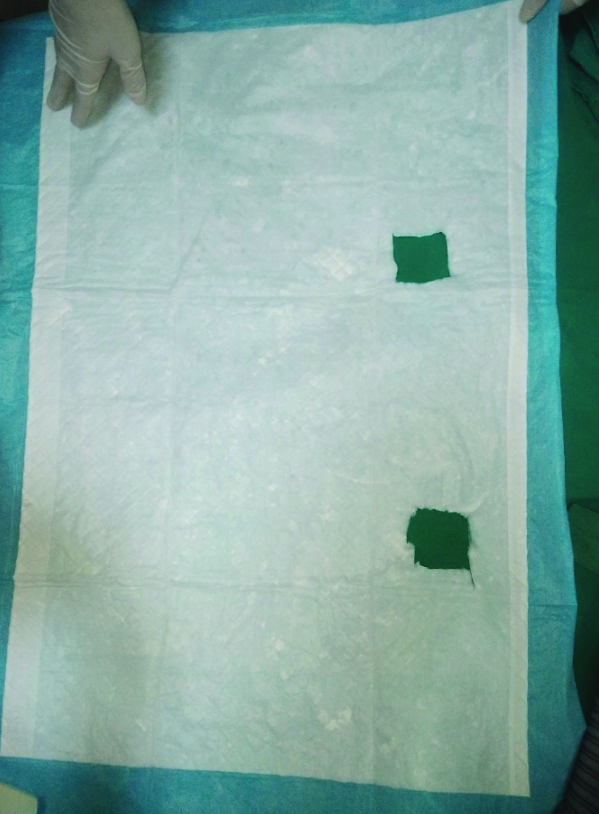Innovative use of Tina Bed as a Cost-effective and Comfortable Dressing for Burn Wounds on the Torso: A Clinical Exploration
Vishal Kaundal1, Ankur Dhirajlal Modi2
1 Senior Resident, Department of Plastic and Reconstructive Surgery, Dr. D. Y. Patil Medical College, Hospital and Research Centre, Dr. D. Y. Patil Vidyapeeth (Deemed to be University), Pune, Maharashtra, India.
2 Senior Resident, Department of Plastic and Reconstructive Surgery, Dr. D. Y. Patil Medical College, Hospital and Research Centre, Dr. D. Y. Patil Vidyapeeth (Deemed to be University), Pune, Maharashtra, India.
NAME, ADDRESS, E-MAIL ID OF THE CORRESPONDING AUTHOR: Ankur Dhirajlal Modi, V/A/3-1, Flat No-103, Jayant Co. Op. Hosing Society, Ajmera Housing Complex, Near Rock Garden, Pimpri, Pune-411018, Maharashtra, India.
E-mail: modi.ankur1992@gmail.com
Ease of application,Moisture retention,Resource efficiency
Dear Editor,
I would like to share an experience using Tina bed as an alternative dressing for burn wounds in a burn centre at a tertiary care facility. Typically used in hospitals to prevent bedsoiling from urine, Tina beds (under pads) have shown impressive fluid absorption and are often utilised in situations involving urinary incontinence, paediatric care and obstetric clinics [Table/Fig-1] [1]. Each Tina bed measures 60×90 cm and is cost-effective. The Tina bed comprises three distinct layers: the inner layer, a non woven cotton layer, promotes comfort; the intermediate layer, composed of an absorbent layer and gel, provides maximum absorbency while effectively managing moisture and odour; and the outermost layer, a polyethylene backing with sealed edges, ensures waterproof protection [2].
The Tina bed (under pad) measures 60×90 cm [1].

The exploration of Tina bed’s application for burn wound management involved two male patients, both aged six. One had a second-degree superficial scald burn [Table/Fig-2a,b] and the other had a second-degree mixed electric burn [Table/Fig-3a,b].
Superficial scald burns over the torso: (a) Burns involving the lower aspect of the chest and the upper aspect of the abdomen; (b) Burns involving the lower back, bilateral flank region and gluteal region.

Mixed-degree electric burn wounds: (a) Burns involving the face, bilateral upper limbs and bilateral axillary regions; (b) Burns involving the back and left flank region.

Application of Tina bed: Both patients underwent sterile dressing procedures in the burn unit. This process involved preparing a new, sterile Tina bed pack, measuring and cutting it to fit the shoulder area for optimal conformity [Table/Fig-4]. The burn wounds were then cleansed with running water, followed by the application of a generous layer of 1% silver sulfadiazine. The Tina bed was subsequently placed over the torso, ensuring overlapping ends to cover the entire burn area and was secured with micropore tape [Table/Fig-5a,b].
The Tina Bed, cut in a square shape, is designed to measure the distance between the shoulders to ensure a proper fit on the torso, resembling a shirt.

Application of the Tina bed on the torso, resembling a shirt, after applying 1% silver sulfadiazine cream: (a) The Tina Bed applied to the anterior aspect of the torso; (b) The Tina Bed covering the back, with overlapping edges secured in position using micropore tape.

Feedback from parents indicated that both patients experienced increased comfort and reduced irritability following the dressing changes. Notably, the patient with superficial and partial-thickness burns healed spontaneously within a mean duration of 12 days, aided by the use of the Tina bed and silver sulfadiazine. The second patient, suffering from full-thickness burns, ultimately required a split-thickness skin graft.
Tina bed dressings offer several advantages for burn wound management. Firstly, they are simple to apply, saving time for both plastic surgeons and nursing staff. Secondly, by reducing the need for traditional dressing materials, Tina beds promote resource efficiency. Thirdly, their non adherent nature ensures painless removal, minimising patient discomfort. Fourthly, Tina beds effectively retain moisture, preventing wound dryness and mitigating the risk of deeper tissue damage [2]. Furthermore, they are cost-effective, reducing expenses on dressing materials and their absorbent layers and waterproof backing effectively prevent soiling [3].
In conclusion, the findings suggest that Tina bed presents a cost-effective and efficient alternative to conventional composite synthetic dressings for burn wounds in healthcare settings. Its ease of application, coupled with the benefits of moisture retention and patient comfort, supports its use. We recommend additional controlled clinical, histological and bacteriological studies to fully evaluate its efficacy in burn management.
[1]. Cottenden AM, Dean GE, Brooks RJ, Haines-Nutt RF, Rothwell JG, Penfold PH, Disposable bedpads for incontinence: Predicting their clinical leakage properties using laboratory tests Med Eng Phys 1998 20(5):347-59.10.1016/s1350-4533(98)00030-79773688 [Google Scholar] [CrossRef] [PubMed]
[2]. Garude K, Srinivasan S, Mody NB, Ghanghurde B, Saldanha J, Vartak A, Bed pad as an alternative painless, comfortable and economical burn wound dressing Indian J Plast Surg 2017 50(3):317-19.10.4103/ijps.IJPS_124_1729618871PMC5868115 [Google Scholar] [CrossRef] [PubMed]
[3]. Chalwade CS, Sawant AD, Katyal I, Study to determine the effect of diaper-based wound care method in reducing wound contamination period in patients suffering from perianal burn wound Indian J Plast Surg 2023 56(4):378-81.10.1055/s-0043-177078737705813PMC10497329 [Google Scholar] [CrossRef] [PubMed]